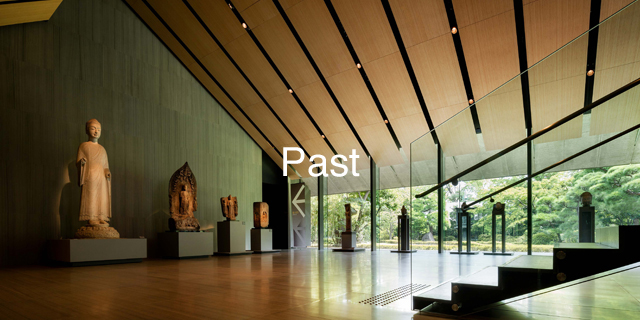
-
Special Exhibition
Irises Screens
The Age of Kōrin, 1658-1716 - Saturday, April 15 – Sunday, May 14, 2023
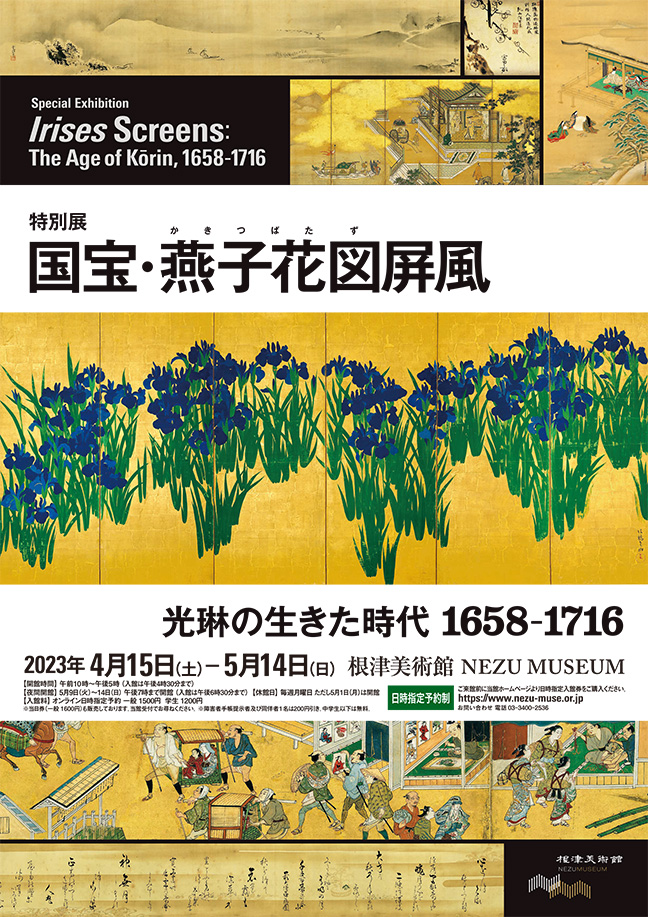

| Closed | Mondays, except May 1 |
|---|---|
| Hours |
10 a.m. - 5 p.m.(last entry: 4:30 p.m.) 10 a.m. - 7 p.m. May 9-15 (last entry: 6:30 p.m.) |
| General admission | Adult 1500 yen, Student 1200 yen |
| Gallery | 1/2 |
The name Ogata Kōrin (1658-1716) evokes the image of that great painter as a leader in the Genroku era (1688-1704), when townsmen were the cultural movers and shakers. Kōrin’s masterpiece from his mid forties, the Irises screens, have a central position in that image. Taking a broader perspective, however, we see him immersed in the arts and culture of the early-modern period , led by the imperial court and the shogunate, in the first half of his life, and then, in the second half, laying the foundations for the Kyoto art world of the latter half of the eighteenth century, in which strikingly individual artists such as Maruyama Ōkyo and Itō Jakuchū flourished.
This exhibition is composed of works created during Kōrin’s lifetime, with the Irises screens their focus. Through them, explore snippets of six decades of the history of painting.
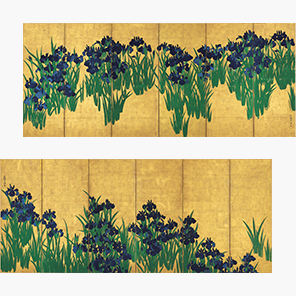

-
Irises Screen
By Ogata Kōrin - Pair of six-panel screens; ink and color on gold-foiled paper
- Japan Edo period, 18th century
Nezu Museum - The groups of irises, painted on a completely gold ground with a lavish use of fine quality pigments, radiate vibrant vitality. This work is the first artistic peak achieved by Kōrin, who had made a late start as a painter in his thirties.
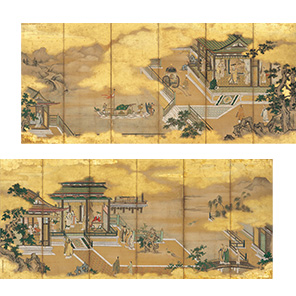
-
Two Chinese Emperors
By Kanō Tan'yū - Pair of six-panel screens; ink and color on gold-foiled paper
-
Japan Edo period, dated 1661
Nezu Museum - Kanō Tan'yū, painter by appointment to the shogunate, created this work not long after Kōrin’s birth in a Kyoto family of merchants who purveyed deluxe textiles to the elite. Its subject is two legendary Chinese emperors whom statesmen should emulate.
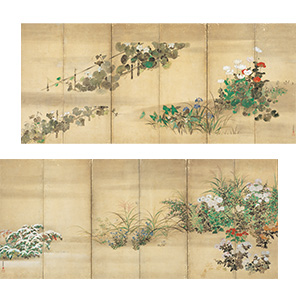
-
Flowers of the Four Seasons
By Kitagawa Sōsetsu - Pair of six-panel screens; ink and color on paper
-
Japan Edo period, 17th century
Nezu Museum - These screen paintings, with their extensive use of sumi ink, are elegant and fresh. In the imperial court circles in which the young Kōrin sought to play an active part, such floral paintings were fashionable.
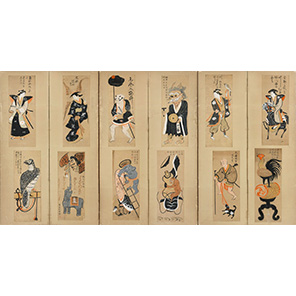
- Otsu-e Folk Picture
- Six-panel screen; ink and color on paper
-
Japan Edo period, 18th century
Nezu Museum - Otsu-e were popular souvenirs available on the road connecting Kyoto and Otsu. This work is a valuable example of turning these folk pictures into a suitably simple folding screen.
